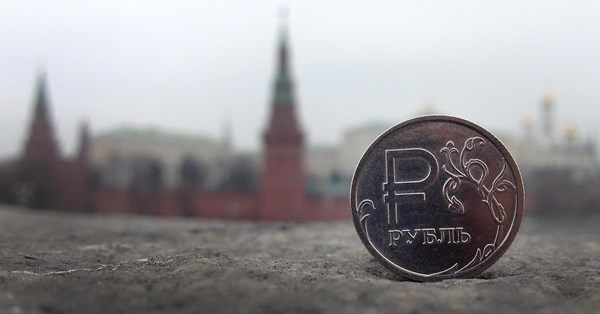Russian ruble wiped out by capital outflow
The Russian currency market continues to sink due to the risk of sanctions and the outflow of foreign capital, finanz.ru reports.
After gaining 2.05 rubles on Wednesday, 1.11 on Thursday, the US dollar gained a further 1.24 rubles during trade on Friday, reaching 67.8975 rubles, the highest since April 18, 2016. The euro appreciated by 48 kopeks for the day and 3.11 rubles since the start of the week, updating its 4-month high to 77.43 rubles.
There is a growing lack of foreign currency in the market: the cumulative number of asks registered on the exchange dropped to $22 million at the end of the main session, one fifth of the average value for recent months. Alongside the risk of anti-Russian sanctions, emerging markets have been affected by the fire raging on the Turkish economy, observed analyst from Freedom Finance Anastasia Sosnova.
The Turkish lira depreciated by 20% in a day after US President Donald Trump, who had already placed sanctions on Turkish officials, announced a twofold increase in the tariffs on steel and aluminum from the country.
Turkish President Recep Erdogan responded by promising that Turkey “will not be brought to its knees” by “economic manipulations”. The Turkish crisis has caused EM currencies to drop – investors are withdrawing their money from funds focusing on emerging countries, according to senior analyst Richard Segal from Manulife Asset Management.
Under the selling pressure, the South African rand fell by 3%, the Brazilian real by 1.8%, and the MSCI index, which reflects the capitalization of the EM areas, by 2.03%.
Sberbank securities dropped by a further 4.98% on the Moscow Exchange and by 6.06% in London. The RTS index lost 3.68%, hitting its lowest since April, and Russian government bonds hit a 15-month low according to the RGBI.
Comments by the Russian Central Bank were unable to calm the market: the regulator announced that it would continue to buy currency for the Ministry of Finance and may “correct” the volume of operations only for a time, and that on the long-term horizon, there will be full-fledged intervention.
“At present the government does not set itself the goal of avoiding a collapse of the ruble. And so they are not going to do anything,” said trader Pyotr Milovanov from Metallinvestbank.
The outflow of capital from Russia is accelerating: in July it was $4.2 billion, 10 times the figure for the entire second quarter, according to the Russian Central Bank. The private sector is starting to join in, and under these circumstances the dollar may reach 70 rubles, Reiffeisen Bank predicts.
Exporters, whom the Central Bank has turned to for assistance, are reluctant to sell their foreign currency, said Sberbank CIB analyst Alisa Zakirova. Some of them are probably holding their foreign currency earnings in expectation of an even weaker exchange rate, whereas others are hoarding foreign currency to repay foreign debt ($34 billion by the end of the year), Reiffeisen Bank analyst Denis Poryvay believes.
Repayment of loans leaches foreign currency out of Russia, leading to a decrease in the banks’ dollar reserves, according to Finam analyst Sergey Drozdov. This is demonstrated by the sharp increase in interest rates on dollar deposits: by June, the average interest on one-year deposits had spiked to 1.75% per annum, after 0.83% in April (and 0.76% in January).
“It is not impossible that the Russian bank system will simply physically run out of dollars to counter the attacks on the ruble,” Drozdov observes. “And soon, if not hours, then in days, we will see a new round of devaluation of the Russian currency”.
